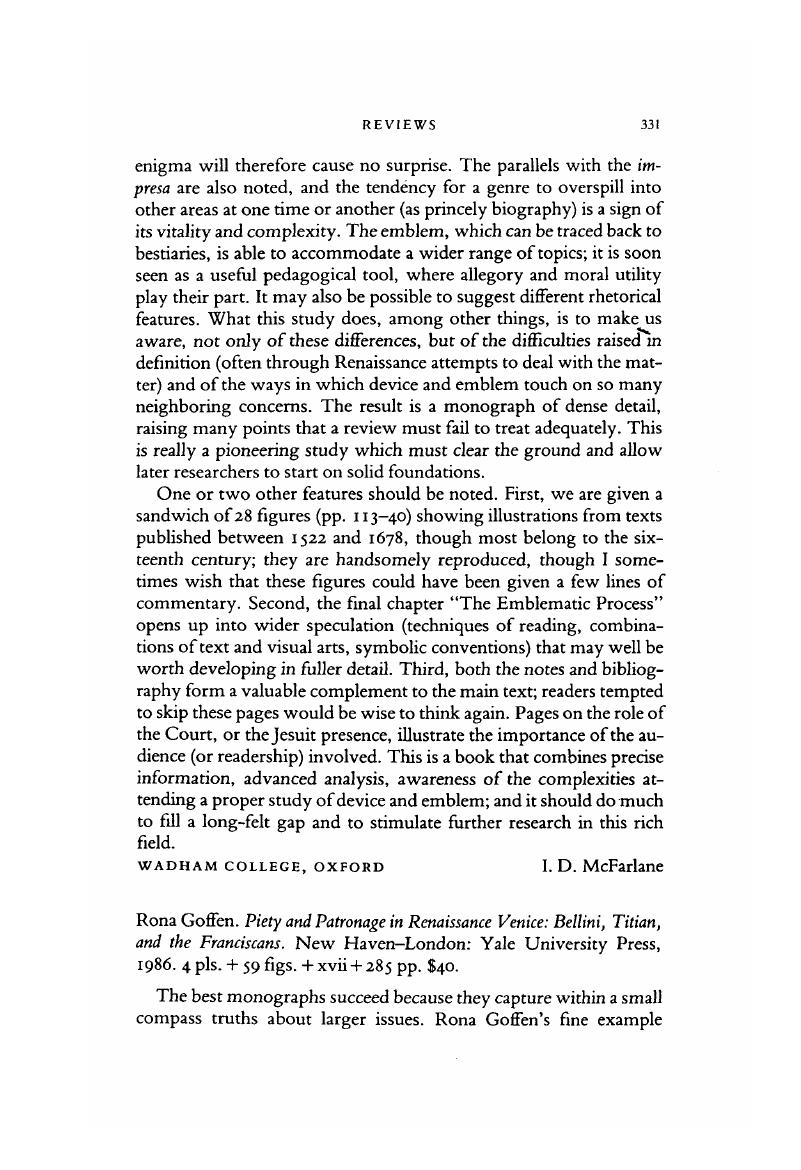No CrossRef data available.
Article contents
Rona Goffen. Piety and Patronage in Renaissance Venice: Bellini, Titian, and the Franciscans. New Haven-London: Yale University Press, 1986. 4 pls. + 59 figs. + xvii + 285 pp. $40.
Published online by Cambridge University Press: 20 November 2018
Abstract

- Type
- Reviews
- Information
- Copyright
- Copyright © Renaissance Society of America 1987
References
1 For an example of a microhistory of Venetian architecture, see Foscari, Antonio and Tafuri, Manfredo, L'armonia e i conflitti: La chiesa di San Francesco della Vigna nella Veneziadel '500. (Microstorie, 6; Turin, 1983.)Google Scholar
2 The use of an isolated but revealing clue, called the paradigma indiziario, has been one of the characteristic traits of the microhistorians. The principal theoretical statement about it is that of Carlo Ginzburg, “Spie: Radici di un paradigma indiziario,” Ombre Rosse, 29 (1979), 80-107, translated as “Morelli, Freud and Sherlock Holmes: Clues and Scientific Method,” History Workshop, 9 (1980), 5-36. For criticisms of the method see Vincenzo Ferrone and Massimo Firpo, “From Inquisitors to Microhistorians: A Critique of Pietro Redondi's Galileo eretico,” The Journal of Modern History, 58 (1986), 485-525.




